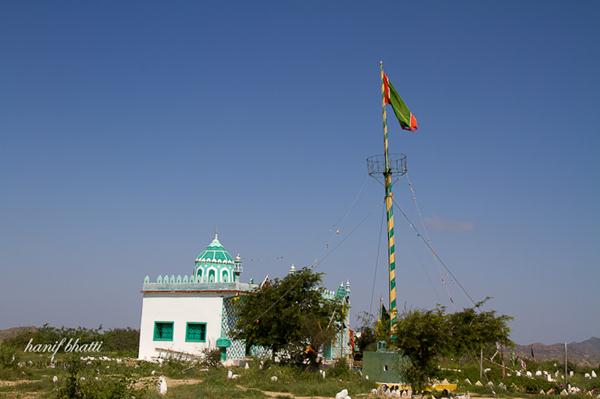A famous folktale of love told in the length and breadth of Sindh, Pakistan Sassui Punhun.
This tragic love story is woven around historically two neighboring regions i.e. Sindh and Balochistan which are now part of Pakistan.

Sassui
Sassui was the daughter of the King of Bhambour (a place whose ruins are near Thatta). Upon Sassui's birth, astrologers predicted that she was a curse for the royal family’s prestige. The Queen ordered that the child be put in a wooden box and thrown in the river Indus. They did so; the wooden box landed with a local washerman who believed the child was a blessing from God and took her home.
Punnun
Punnun / Panhu Khan was the son of King Mir Hoth Khan (Hoth, a famous Baluchi tribe in Makran (Balochistan).
Sassui and Punnun meet
Sassui was as beautiful as the fairies of heaven. When the stories of her beauty reached Punnun; he became desperate to meet her. The handsome young Prince of Makran travelled to Bhambour & devised a plan by sending his clothes to Sassui's father (the washerman) for cleaning. Later, he went there to collect the clothes & catch a glimpse of Sassui. That was love at first sight. Punnun asked washerman his duaghter’s hand but the washerman wanted to marry her daughter in his caste & no one else.
Sassui's father asked Punnun to prove that he was worthy of Sassui by passing the test as a washerman. Punnun agreed to prove his love. While washing, he tore all the clothes as, being a prince, he had never washed any clothes; he thus failed the agreement. But before he returned those clothes, he hid gold coins in the pockets of all the clothes, hoping this would keep the villagers quiet. The trick worked, and Sassui's father agreed to the marriage.
Punnun's brothers
Punnun’s father and brothers were against this marriage (Punnun being a prince and Sassui being a washerman's daughter), Punnun's brothers traveled to Bhambhor. First they threatened Punnun but when he didn't relent, they tried more devious methods & started supporting his marriage. On first night, they pretended to enjoy and participate in the marriage celebrations and forced Punnun to drink different types of wines. When he was intoxicated they carried him on a camel’s back andreturned to their hometown of Kicham.
The lovers meet their end
The next morning, when Sassui realized that she was cheated, she became mad with the grief of separation from her lover and ran barefoot towards the town of Kicham. To reach it, she had to cross miles of desert. Alone, she continued her journey until her feet were blistered and her lips were parched from crying "Punnun, Punnun!” The journey was full of dangerous hazards, which lead to her demise. Punnun’s name was on Sassui's lips throughout the journey. She was thirsty, there she saw a shepherd coming out of a hut. He gave her some water to drink. Seeing her incredible beauty, dirty lustful thoughts came into his mind, and he tried to force himself on Sassui. Sassui ran away and prayed to God to hide her and when God listened to her prayers, land shook and split and Sassui found herself buried in the valley of mountains. When Punnun woke he was himself in Makran he could not stop himself from running back to Bhambhor. On the way he called out "Sassui, Sassui!" to which the shepherd replied. The shepherd told Punnun the whole story. Then Punnun also lamented the same prayer, the land shook and split again and he was also buried in the same mountain valley as Sassui. The legendary grave still exists in this valley. Shah Abdul Latif Bhittai sings this historic tale in his sufi poetry as an example of eternal love and union with Divine.
Location:







